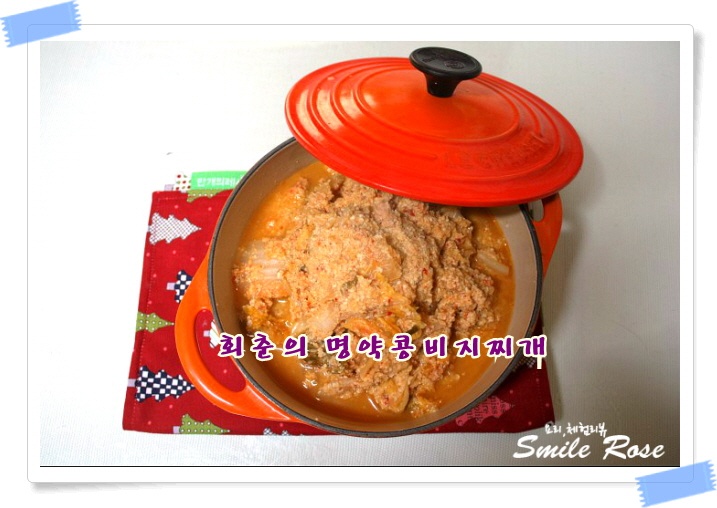Hearty and Nutritious Soybean Paste Stew (Kongbiji Jjigae) – Perfect for Menopause Relief!
Rich in Estrogen! A Golden Recipe for Soybean Paste Stew that Helps Alleviate Menopause Symptoms

Start your new week with a healthy and energizing home-cooked meal! Today, I’ve prepared a nutritious Soybean Paste Stew (Kongbiji Jjigae) using the leftover okara from making tofu. Soybeans are abundant in estrogen, a hormone beneficial for alleviating menopausal symptoms, and their rich protein content is known to support women’s health during menopause and potentially reduce the risk of prostate cancer in men. The stew, made with homemade tofu okara, is delicious, and can also be enjoyed as a snack or a savory side dish with drinks when made into a pancake. Enjoy a satisfying meal with this freshly made, savory Kongbiji Jjigae!
Main Ingredients- Soybean okara (Kongbiji) 300g (from homemade tofu or store-bought)
- Ground pork 200g
- Well-fermented kimchi 1 bowl (finely chopped)
Seasoning & Others- Perilla oil 1 Tbsp
- Salted fermented shrimp (Saeu-jeot) 1 Tbsp (including brine)
- Broth 3 cups (anchovy-kelp broth, rice water, etc.)
- Perilla oil 1 Tbsp
- Salted fermented shrimp (Saeu-jeot) 1 Tbsp (including brine)
- Broth 3 cups (anchovy-kelp broth, rice water, etc.)
Cooking Instructions
Step 1
Soybean okara leftover from homemade tofu can be portioned and frozen for easy use whenever needed. Ground pork can also be pre-portioned to save time when cooking with kongbiji. Finely chop the kimchi for easy preparation.

Step 2
Heat 1 Tbsp of perilla oil in a pot over medium heat. Add the chopped kimchi and stir-fry until softened and fragrant. Once the kimchi is wilted, add the ground pork and cook until browned. Pour in 3 cups of broth and bring to a boil.

Step 3
When the kimchi and pork have simmered for a bit, add the soybean okara. Mash the okara with a spatula to break up any clumps, and continue to simmer over medium heat until well combined.

Step 4
Simmer the kongbiji for about 15 minutes after adding it. This process allows the distinct soybean flavor to mellow while the savory notes deepen, resulting in a delicious kongbiji jjigae. Stir occasionally to prevent sticking to the bottom of the pot.

Step 5
Your Kongbiji Jjigae is now ready! The combination of the tangy, crunchy kimchi, the chewy texture of the pork, and the smooth, nutty flavor of the soybean okara creates a harmonious and deeply satisfying dish. It’s especially comforting during the cold winter months and is so delicious it’ll make you want to finish a whole bowl of rice with it – a true ‘rice thief’!

Step 6
Soybeans are an excellent source of protein, no matter how you consume them. Especially during winter, adequate protein intake is crucial for maintaining body temperature and energy levels. I highly recommend incorporating various soy-based foods like tofu, kongbiji, and bean sprouts into your diet for healthy protein replenishment.

Step 7
I personally enjoy making tofu at home because I love tofu so much. While it might seem a bit involved at first, it becomes quite easy with practice, and freshly made tofu is incomparably more flavorful than store-bought. Also, be aware that store-bought bean sprouts or mung bean sprouts might contain growth promoters. Growing your own bean sprouts at home can be as enjoyable as tending to houseplants and is healthier too! The slightly rich flavor of kongbiji jjigae pairs exceptionally well with spicy and refreshing white kimchi made with chili seeds, creating a fantastic combination. Tomorrow is Dongji (Winter Solstice)! I’m thinking of boiling some red beans to make red bean porridge today. Wishing everyone a wonderful start to the new week!




